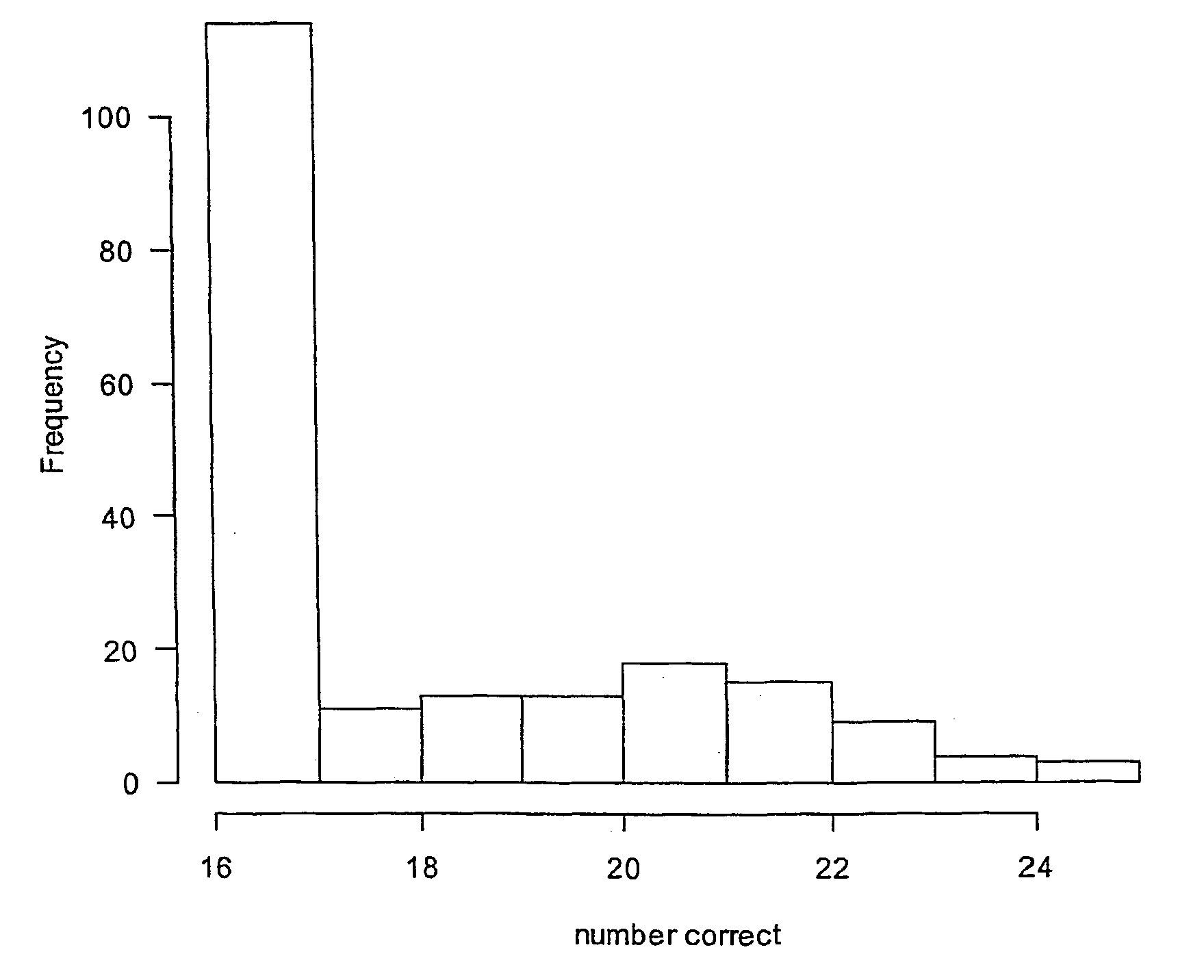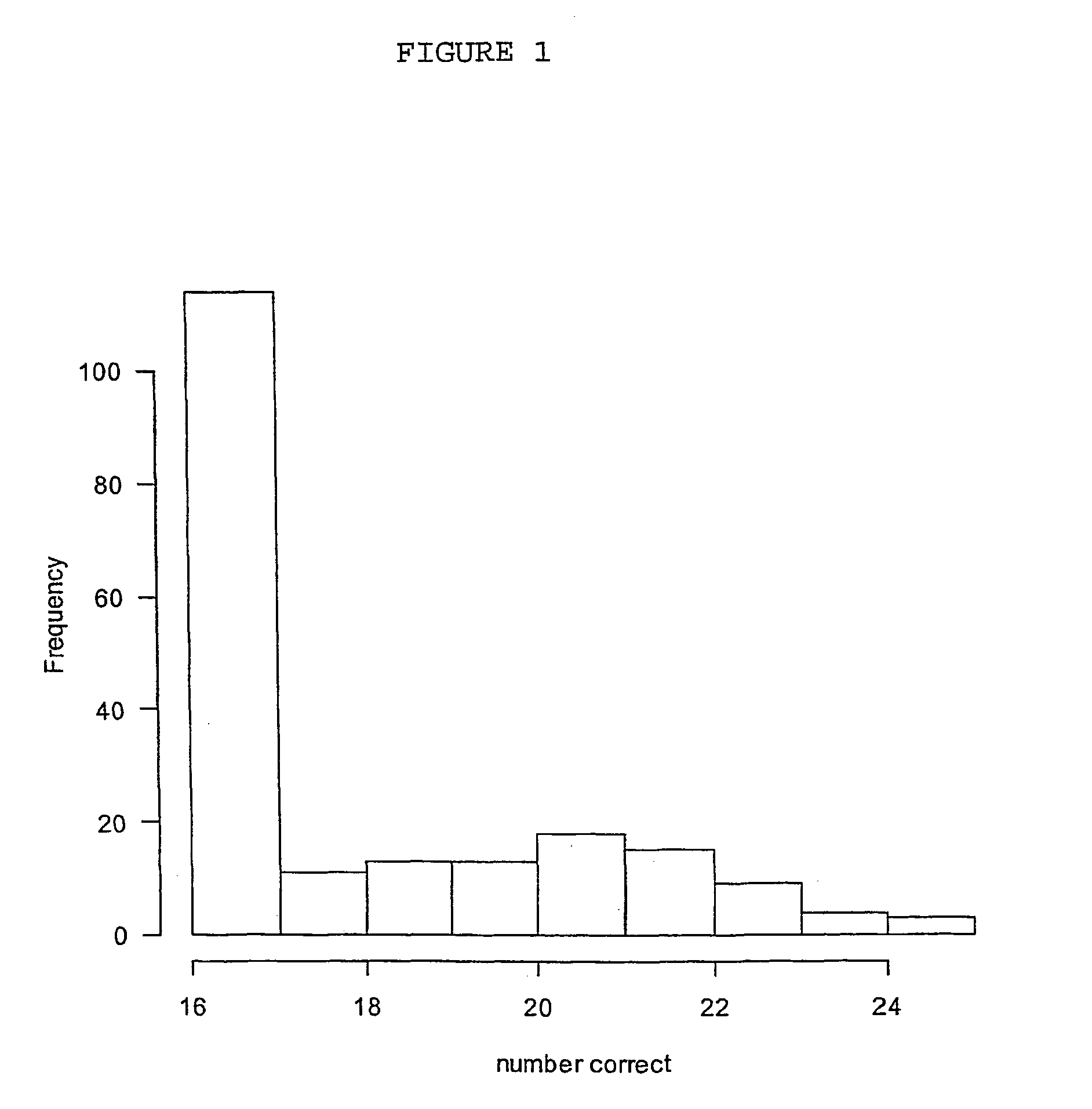Method and apparatus for identifying diagnostic components of a system
- Summary
- Abstract
- Description
- Claims
- Application Information
AI Technical Summary
Benefits of technology
Problems solved by technology
Method used
Image
Examples
example 1
Two Group Classification for Prostate Cancer Using a Logistic Regression Model
[0319] In order to identify subsets of genes capable of classifying tissue into prostate of non-prostate groups, the microarray data set reported and analysed by Luo et al. (2001) was subjected to analysis using the method of the invention in which a binomial logistic regression was used as the model. This data set involves microarray data on 6500 human genes. The study contains 16 subjects known to have prostate cancer and 9 subjects with benign prostatic hyperplasia. However, for brevity of presentation only, 50 genes were selected for analysis. The gene expression ratios for all 50 genes (rows) and 25 patients (columns) are shown in Table 4.
[0320] The results of applying the method are given below. The model had G=2 classes and commenced with all 50 genes as potential variables (components or basis functions) in the model. After 21 iterations (see below) the algorithm found 2 genes, (numbers 36 and 47...
example 2
Two Group Classification Using a Large Data Set and a Binomial Logistic Regression Model
[0366] In order to identify subsets of genes capable of classifying tissue into different clinical types of lymphoma, the data set reported and analysed in Alizadeh, A. A., et al. (2000) Distinct types of diffuse large B-cell lymphoma identified by gene expression profiling. Nature 403:503-511 was subjected to analysis using the method of the invention in which a binomial logistic regression was used as the model.
[0367] In the data set, there are n=4026 genes and n=42 samples. In the following DLBCL refers to “Diffuse large B cell Lymphoma”. The samples have been classified into two disease types GC B-like DLBCL (21 samples) and Activated B-like DLBCL (21 samples). We use this set to illustrate the use of the above methodology for rapidly discovering genes which are diagnostic of different disease types.
[0368] The results of applying the methodology are given below. The model had G=2 classes a...
example 3
Multi Group Classification
[0370] In order to identify genes capable of classifying samples into one of a multitude of classes, the data set reported and analyzed in Yeoh et al. Cancer Cell v1: 133-143 (2002) was subjected to analysis using the method of the invention in which a likelihood was used based on a multinomial logistic regression. The same pre-processing as described in Yeoh et al has been applied. This consisted of the following: [0371] drop the following 8 arrays: BCR.ABL.R4, MLL.R5, Normal.R4, T.ALL.R7, T.ALL.R8,Hyperdip.50.2M.3, Hypodip.2M.3 , and Hypodip.2M.2 [0372] set the mean response value of each array to 2500 [0373] thresholding—values over 45000 are set to 45000 values less than 100 are set to 1 [0374] genes with less than 0.01 present are eliminated—this amounted to 1607 genes [0375] genes for which the difference between the maximum and the minimum value was less than 100 are eliminated (1604 genes)
[0376] After preprocessing there are n=11005 genes and n=24...
PUM
 Login to View More
Login to View More Abstract
Description
Claims
Application Information
 Login to View More
Login to View More - R&D
- Intellectual Property
- Life Sciences
- Materials
- Tech Scout
- Unparalleled Data Quality
- Higher Quality Content
- 60% Fewer Hallucinations
Browse by: Latest US Patents, China's latest patents, Technical Efficacy Thesaurus, Application Domain, Technology Topic, Popular Technical Reports.
© 2025 PatSnap. All rights reserved.Legal|Privacy policy|Modern Slavery Act Transparency Statement|Sitemap|About US| Contact US: help@patsnap.com



